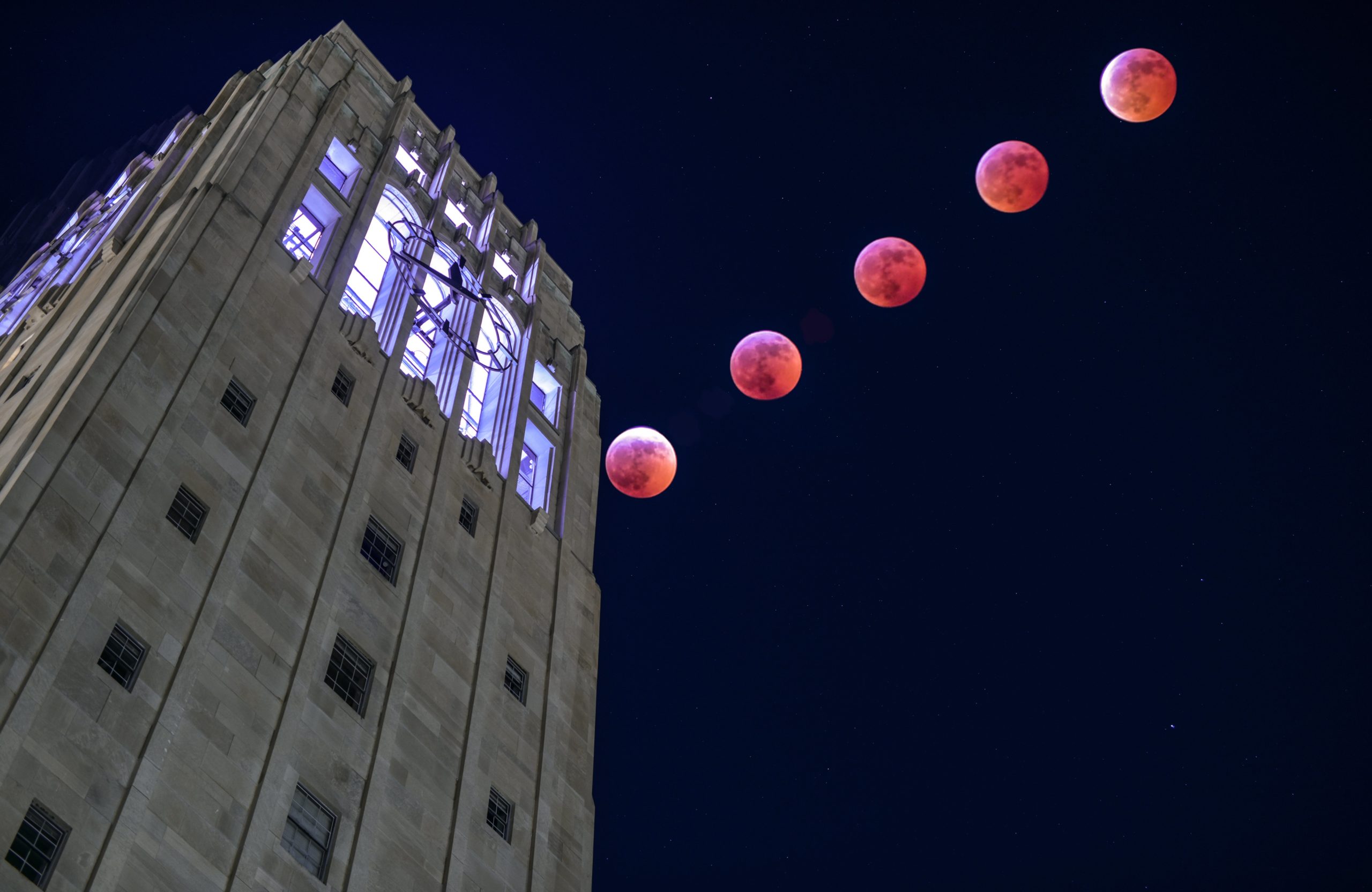2019 Grand Prize Winner – Gregory Gicewicz, Jr.

Time Passages
The passage of time has permeated society since the dawn of humanity. Years; Months; Weeks; Days; Hours; Seconds; these are human creations to define our perception of time while we relentlessly inch forward. Devices such as sundials, calendars, clocks, or in this case, clock towers, have been manufactured to keep track of these standardized measurements. However, millennia before humanity had the tools to break time into these rigid measurements, we had to search for natural events to measure our time passages. Lunar cycles were used to track months and seasons. The Moon’s orbit corresponds almost perfectly to one month, or one quarter of a season. The Harvest Moon, typically the ninth full moon of the year, heralded the end of summer and the beginning of the harvest in preparation for winter. The Flower Moon, the fifth full moon of the year, signaled the end of winter and the beginning of spring. For years, the lunar cycle was the most accurate way to track seasons. The breaking of this reliable cycle served as a cause for panic among ancient peoples. A total lunar eclipse would serve as a reminder of how little control we had over the natural world, and the crimson tint of red cast down by a Blood Moon would inspire fear. Today we know that the eclipse is caused by the passage of the Moon through the shadow cast behind the Earth, and the red is caused by the ring of sunsets that encircle the Earth, casting their red glow upon the moon.
Capturing this image required intense planning, both for the eclipse and the cold. I knew the times and location of the moon in the sky during the eclipse, I just had to find the right place to photograph the event. I scoured campus searching for ideal spot. I looked at the Arb, the Big House, and the Diag, but none of these locations felt like a good pair for the impending spectacle above. I settled on shooting over the Bell Tower. Not only would it line up perfectly with the moon, but it was right next to the League, and most importantly warmth from the subzero night. When the clock struck 11:41PM, I exited the building, cocooned in three jackets, two pairs of pants and gloves, and woolen socks, and braved the minus fifteen degree wind-chill. I took one photo every twelve minutes and thirty-six seconds, ending precisely at 12:44PM, with a layer of ice over my facemask and the composition you see here.
